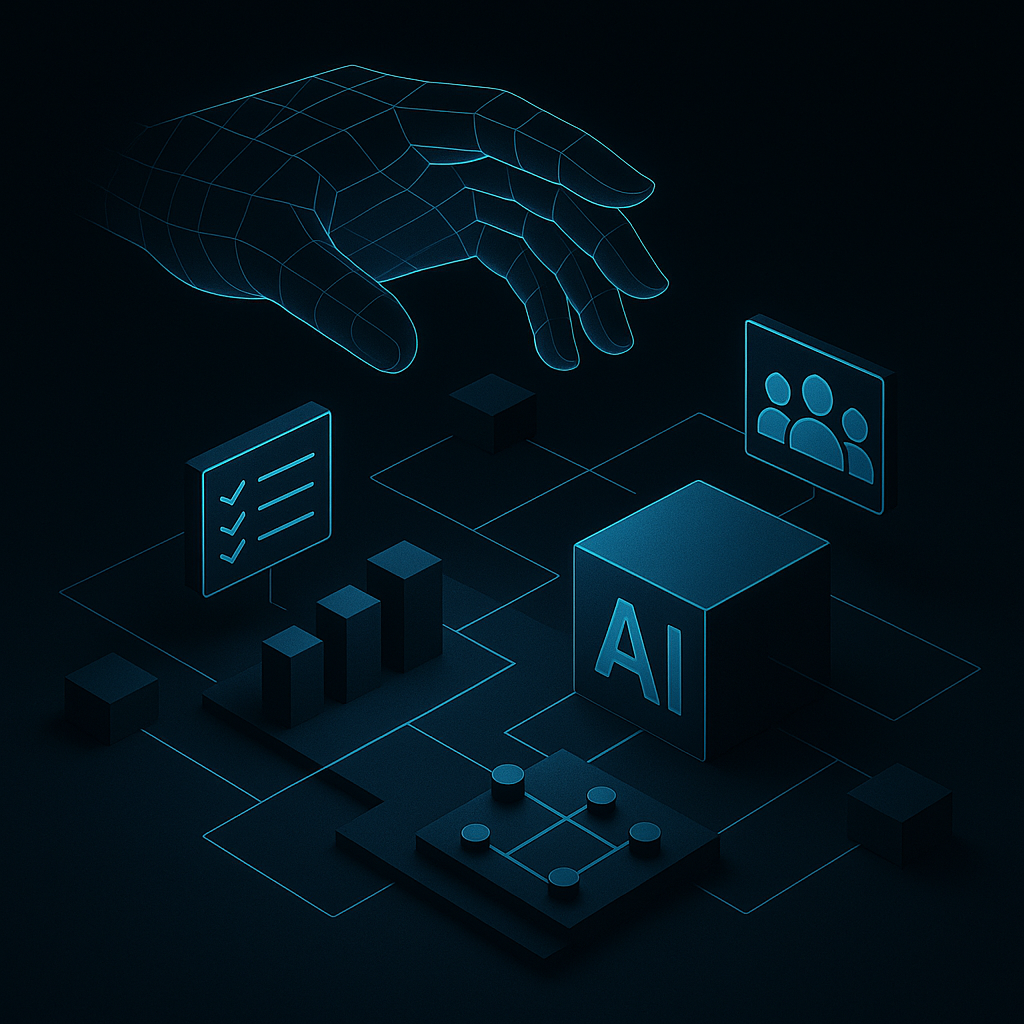The Invisible Hand of Technical Program Management in the Age of AI
As a seasoned TPM, I've learned to navigate the complexities of AI projects. Join me as I reflect on the art of influencing through trust, planning, and communication, all while keeping the wheels of innovation turning smoothly.

The Invisible Hand of Technical Program Management in the Age of AI
As a seasoned TPM, I've learned to navigate the complexities of AI projects. Join me as I reflect on the art of influencing through trust, planning, and communication, all while keeping the wheels of innovation turning smoothly.
Prioritizing Tasks For AI Success
It was a crisp Monday morning, and I found myself staring at a wall of sticky notes, each representing a critical task in our ambitious AI project. As I began to peel them off for prioritization, I couldn’t help but think of a quote from the famous management consultant Peter Drucker: "What gets measured gets managed." In the world of Technical Program Management (TPM), this couldn’t be more true, especially when working on cutting-edge AI initiatives where ambiguity reigns and the stakes are high.
In my journey as a TPM, I’ve come to realize that our role often feels like navigating a ship through foggy waters. We’re not always the ones in the captain’s chair, but we certainly steer the ship toward safe harbors. This indirect influence is a hallmark of effective TPMs, especially when it comes to leveraging AI in our projects. We don’t just manage tasks; we sculpt execution strategies, foster cross-functional trust, and ensure that all parts of our complex machine work in harmony.
When embarking on an AI-driven project, the first step is framing our execution strategy. I learned early on that simply stating the objectives isn’t enough. We must communicate the impact of our AI initiatives in a way that resonates with stakeholders. For instance, during a recent project to implement a machine learning model for predictive analytics, I began our kickoff planning by painting a vivid picture of how this could transform our customer service experience. Instead of just focusing on the technical specs, I highlighted the potential to reduce response times from hours to mere minutes. It was this narrative that garnered enthusiasm and support from our executives, setting a collaborative tone for the project.
As we moved into the kickoff phase, we needed to define roles clearly. Enter the RACI matrix—my trusty map through the labyrinth of responsibilities. In an AI project, where data scientists, software engineers, and product managers converge, clarity is paramount. I recall a moment when I mistakenly thought everyone understood their roles, leading to a bottleneck that cost us precious time. After that, I made it a point to host a RACI workshop at the beginning of each project, ensuring everyone was on the same page. This simple exercise not only clarified responsibilities but also built trust among team members, as they recognized their interdependencies.
Dependency mapping became another essential tool in my TPM toolkit. In the world of AI, dependencies are like the unseen roots of a tree; if one falters, the entire structure can wobble. In one particular project, I discovered a critical dependency on an external data source that our data scientists needed to train the model. By identifying this early and communicating it effectively, we avoided a last-minute scramble that could have derailed our timeline. I can’t stress enough how vital it is for TPMs to view the project landscape holistically, keeping an eye on all moving parts.
Of course, no project is without risks, especially in the unpredictable realm of AI. Risk management is where we TPMs often earn our stripes. I remember a project where we were developing an AI solution for real-time fraud detection. As we progressed, it became clear that the model's accuracy was affected by unexpected fluctuations in user behavior. Instead of panicking, I organized a risk review session where we brainstormed mitigation strategies. This not only alleviated the immediate concerns but also fostered a culture of proactive problem-solving. It’s this kind of resilience that keeps complex programs moving forward.
Effective communication with executives is another aspect where the narrative style plays a crucial role. When presenting updates, I learned that data alone doesn’t cut it. Instead of drowning them in numbers, I started weaving stories around the data. For instance, instead of saying, "Our model achieved 85% accuracy," I would describe a scenario where our AI detected a fraudulent transaction just in time, saving the company from a substantial loss. This approach not only captured their attention but also reinforced the value of our efforts.
As I reflect on my experiences, I realize that our role as TPMs is not just about managing projects; it’s about building bridges. We influence indirectly, establishing trust across teams and guiding complex programs toward success. In the rapidly evolving landscape of AI, where innovation is both exhilarating and daunting, our ability to navigate challenges, foster collaboration, and communicate effectively is more crucial than ever.
As we continue to harness the power of AI, let’s remember that our greatest tools are not just our project management frameworks but our capacity to connect people and ideas.
Inspiring Progress Through Thoughtful Choices
In doing so, we’ll not only keep the wheels of progress turning but also inspire those around us to embrace the journey ahead.
So, the next time you find yourself staring at a wall of sticky notes, remember: it’s not just about tracking tasks; it’s about steering the ship through foggy waters, one thoughtful decision at a time.




